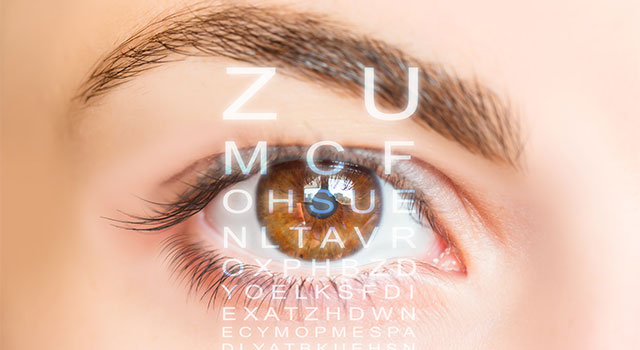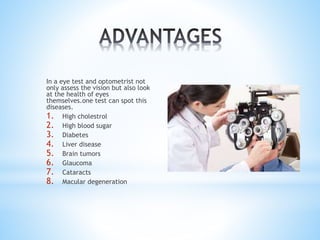Premier Eyecare Near Me: Professional Vision Providers Available
Premier Eyecare Near Me: Professional Vision Providers Available
Blog Article
The Function of Advanced Diagnostic Devices in Identifying Eye Disorders
In the realm of ophthalmology, the use of sophisticated diagnostic devices has actually transformed the early recognition and management of numerous eye problems. From finding subtle adjustments in the optic nerve to monitoring the development of retinal diseases, these modern technologies play a pivotal function in boosting the accuracy and performance of detecting eye conditions. As the need for accurate and timely medical diagnoses proceeds to expand, the integration of advanced tools like optical coherence tomography and visual field screening has become essential in the world of eye treatment. The detailed interaction in between modern technology and ocular practices not just clarifies complex pathologies but also opens up doors to customized treatment techniques.
Value of Very Early Diagnosis
Early medical diagnosis plays a pivotal function in the effective administration and treatment of eye disorders. By identifying eye conditions at a very early stage, health care service providers can use ideal therapy plans customized to the particular problem, ultimately leading to far better outcomes for clients.

Technology for Discovering Glaucoma
Advanced diagnostic modern technologies play a vital duty in the very early detection and monitoring of glaucoma, a leading cause of permanent loss of sight worldwide. Another innovative tool is visual field testing, which maps the sensitivity of a client's visual area, assisting to identify any type of locations of vision loss quality of glaucoma. These sophisticated analysis tools allow eye doctors to identify glaucoma in its very early stages, enabling for timely treatment and better administration of the condition to stop vision loss.
Role of Optical Coherence Tomography

OCT's ability to measure retinal nerve fiber layer thickness allows for accurate and unbiased measurements, aiding in the early detection of glaucoma also prior to aesthetic field issues come to be noticeable. In general, OCT plays a crucial duty in enhancing the analysis accuracy and monitoring of glaucoma, inevitably contributing to better outcomes for people at risk of vision loss.
Enhancing Diagnosis With Visual Area Testing
A vital part in thorough ophthalmic analyses, aesthetic field testing plays a crucial duty in boosting the analysis process for different eye disorders. By evaluating the complete extent of an individual's aesthetic field, this test offers essential information concerning the functional integrity of the whole aesthetic pathway, from the retina to the visual cortex.
Visual field testing is particularly valuable in the diagnosis and monitoring of conditions such as glaucoma, optic nerve disorders, and different neurological illness that can influence vision. With quantitative measurements of peripheral and main vision, clinicians can detect refined changes that may suggest the presence or development of these conditions, even prior to obvious signs happen.
Additionally, aesthetic field screening enables the monitoring of therapy effectiveness, helping ophthalmologists tailor restorative treatments to individual people. eyecare near me. By tracking adjustments in aesthetic area efficiency with time, doctor can make educated choices about changing medications, suggesting medical interventions, or applying various other appropriate actions to protect or improve a person's visual feature
Taking Care Of Macular Degeneration

Conclusion
In final thought, advanced analysis devices play an important role in recognizing eye disorders early on. Technologies such as Optical Coherence Tomography and aesthetic field screening have greatly improved the precision and effectiveness of detecting conditions like glaucoma and macular degeneration.
Report this page